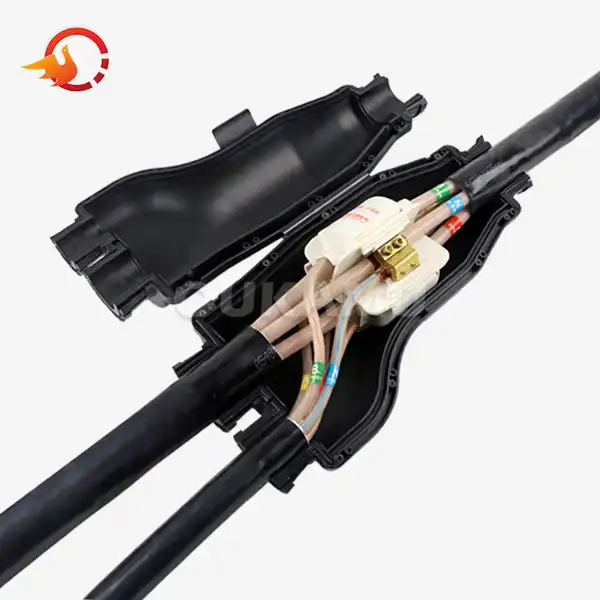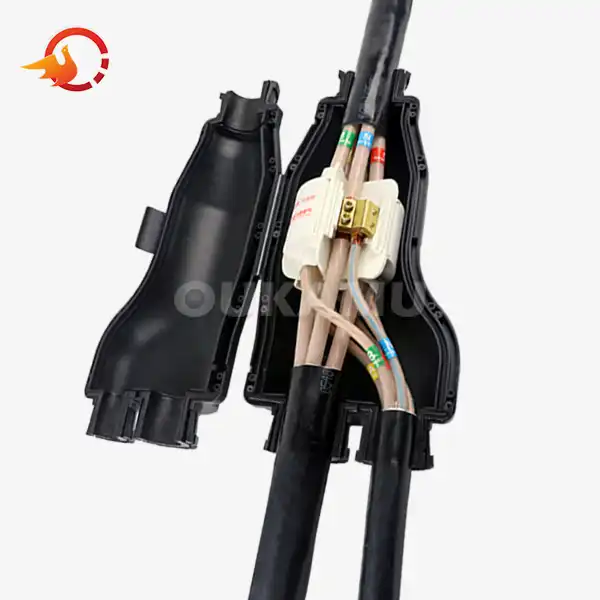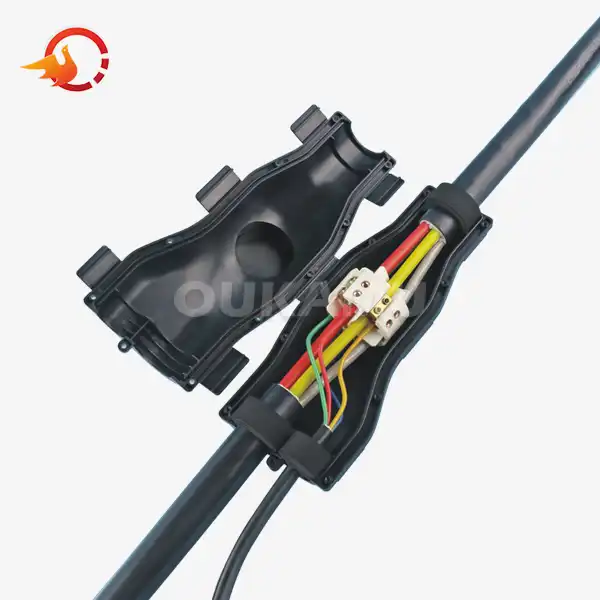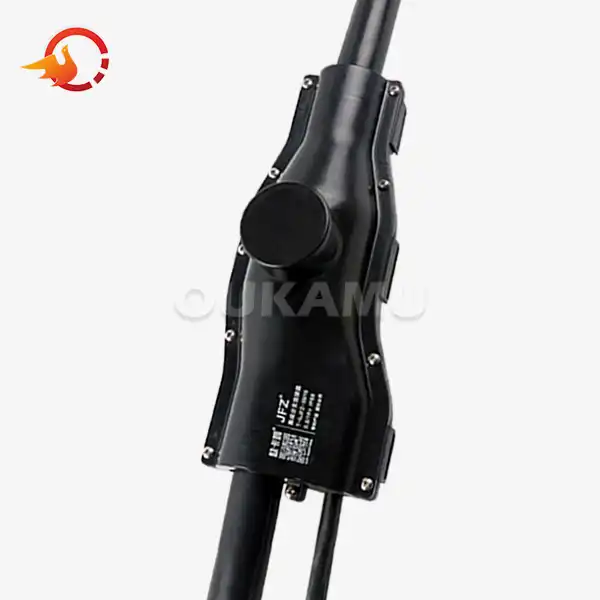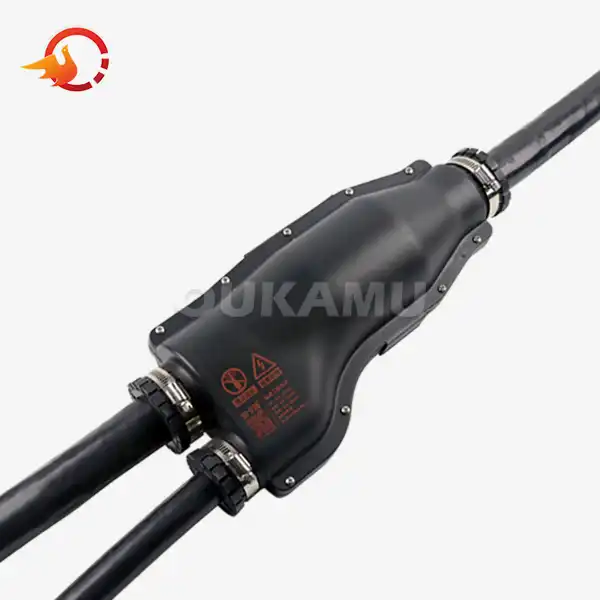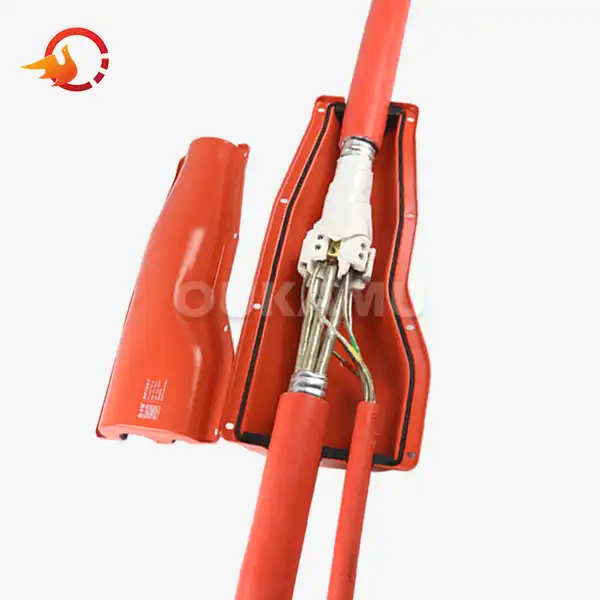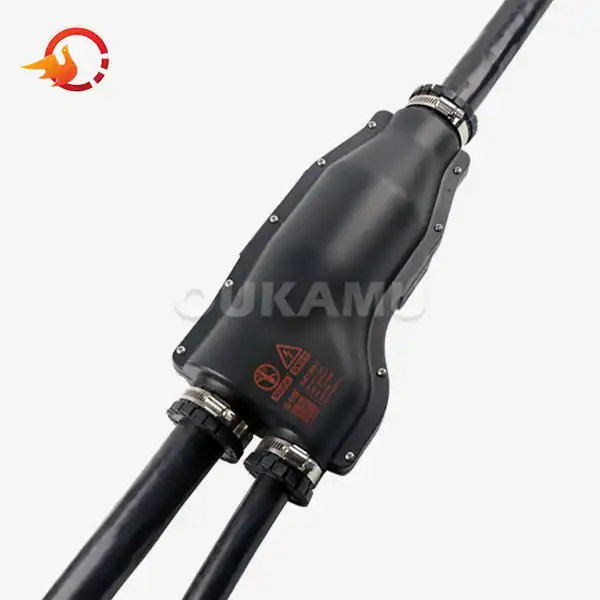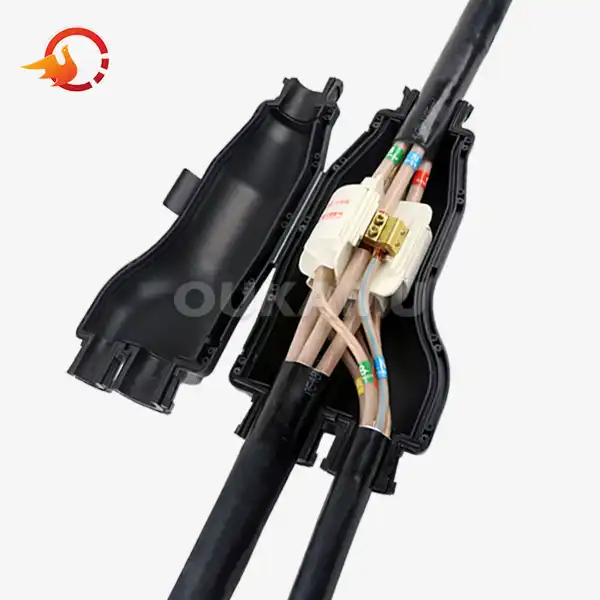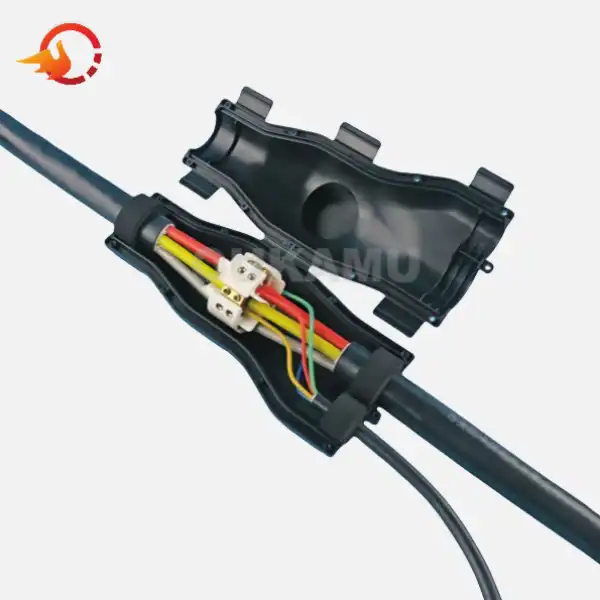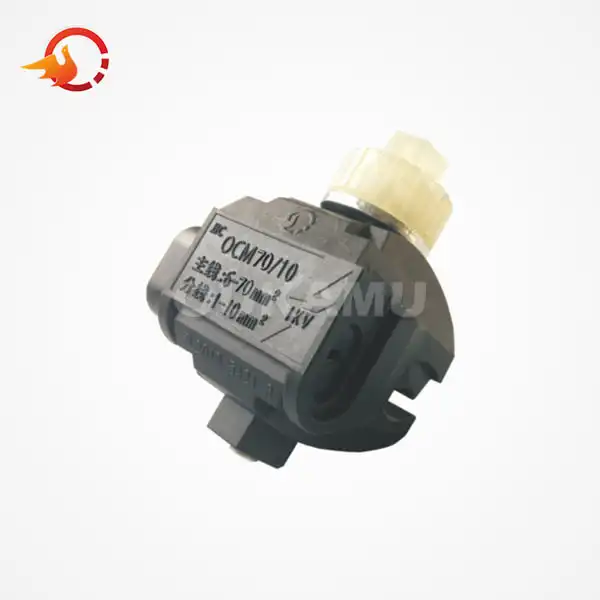The difference between Branch Cables and Prefabricated branch cable
 2024-12-16 08:55:49
View:389
2024-12-16 08:55:49
View:389In the world of electrical infrastructure, cable connections play a pivotal role in ensuring the efficient distribution of power. Two common solutions for cable branching are Branch Cables and Prefabricated branch cables. While both serve the purpose of connecting multiple cables, they differ significantly in terms of design, installation, and overall efficiency. This article delves into the nuances of these two cable connection methods, highlighting their unique features and helping you make an informed decision for your next project.
Understanding Branch Cables: A Revolutionary Approach
Branch Cables, also known as T-Type Terminals, represent a cutting-edge solution in the realm of cable connections. These innovative devices allow for the creation of branch connections without the need to cut the main trunk cable. This non-intrusive approach offers numerous advantages in terms of installation, maintenance, and overall system integrity.
One of the most salient features of Branch Cables is their ability to connect at any position along the trunk cable. This flexibility is a game-changer for projects where precise branch locations may not be predetermined or may need to change over time. The integrated design of Branch Cables incorporates flame-retardant and fire-resistant insulated T-terminal bodies, ensuring both safety and reliability.
The connection process for Branch Cables is both elegant and efficient. The same-phase trunk conductor and branch conductor are securely clamped in the trunk U groove and branch U groove of a double U-shaped tapping terminal. This compression connection method ensures a robust and reliable electrical connection. Furthermore, the branch line is insulated and sealed as a whole, providing an additional layer of protection against environmental factors.
The compact structure of Branch Cables is another notable advantage. Their small size allows for versatile installation options, including both open installations and placement within cable bridges. This adaptability can be particularly beneficial in projects with space constraints or unique architectural requirements.
Prefabricated branch cable: The Traditional Approach
Prefabricated branch cables represent a more traditional approach to cable branching. These cables are manufactured in factories with predetermined branch positions and directions. While this method has been used for many years, it comes with several limitations that may impact project efficiency and cost-effectiveness.
One of the primary characteristics of prefabricated branch cables is their rigid structure. The branch positions and directions are set during the manufacturing process, offering little flexibility for on-site adjustments. This inflexibility can lead to challenges during installation, especially if the actual site conditions differ from the initial plans.
From a safety perspective, prefabricated branch cables are generally considered safe when properly installed. They offer reliable connections and can provide stable operation under normal conditions. However, their aesthetic appeal may be limited compared to more modern solutions, as they often result in a less streamlined appearance due to excess cable lengths and multiple connection points.
In terms of technological advancement, prefabricated branch cables are often viewed as an older, more established technology. While this can translate to familiarity for some installers, it also means that these cables may not benefit from recent innovations in materials science or connection technologies. The construction process for prefabricated branch cables can be more challenging compared to newer alternatives. The factory prefabrication means that installers have less flexibility to adapt to on-site conditions. This can result in difficulties during both initial installation and subsequent maintenance operations.
Comparing Branch Cables and Prefabricated branch cable: Key Differences
When evaluating Branch Cables against Prefabricated branch cables, several key differences emerge that can significantly impact project outcomes:
1. Installation Flexibility: Branch Cables offer unparalleled flexibility, allowing for on-site installation and branch connection at any position along the trunk cable. In contrast, prefabricated branch cables have fixed branch positions, limiting adaptability to site conditions.
2. Aesthetic Appeal: The integrated design of Branch Cables results in a more streamlined and visually appealing installation. Prefabricated branch cables often lead to excess cable lengths and multiple connection points, which can detract from the overall aesthetics of the installation.
3. Space Efficiency: The compact structure of Branch Cables allows for installation in tight spaces and cable bridges. Prefabricated branch cables may require more space due to their fixed branch lengths and connection points.
4. Maintenance and Reusability: Branch Cables are designed for easy maintenance and can be reused if needed. Prefabricated branch cables may present challenges during maintenance due to their fixed structure and are generally not designed for reuse.
5. Environmental Protection: Branch Cables offer comprehensive protection against environmental factors, including insulation, flame retardancy, fire resistance, dust and water protection, and anti-aging properties. While prefabricated branch cables can also offer some of these protections, they may not match the integrated approach of Branch Cables.
6. Cost-Effectiveness: Branch Cables can lead to significant cost savings by reducing cable waste, minimizing labor requirements, and decreasing overall installation time. Prefabricated branch cables often result in cable waste (typically 1-3 meters per branch) and have higher installation costs due to their inflexibility.
7. Innovation: Branch Cables represent a more innovative approach to cable branching, incorporating recent advancements in materials and connection technologies. Prefabricated branch cables, while reliable, are based on older technologies and may not benefit from the latest innovations in the field.
Conclusion
In conclusion, the choice between Branch Cables and Prefabricated branch cables can significantly impact the efficiency, cost-effectiveness, and overall success of electrical infrastructure projects. Branch Cables offer a modern, flexible, and efficient solution that addresses many of the limitations associated with traditional prefabricated branch cables. By allowing for on-site customization, reducing waste, and improving both aesthetics and functionality, Branch Cables represent a forward-thinking approach to cable connections.
As the electrical industry continues to evolve, solutions like Branch Cables are paving the way for more adaptive, efficient, and sustainable infrastructure. For projects that require flexibility, cost-effectiveness, and long-term reliability, Branch Cables present a compelling option that merits serious consideration. For more information about innovative cable connection products and solutions, please contact us at info@okmbranchcable.com. Our team of experts is ready to help you find the ideal cable connection solution for your specific needs.
References
1. International Electrotechnical Commission (IEC). (2021). IEC 60502: Power cables with extruded insulation and their accessories for rated voltages from 1 kV up to 30 kV.
2. Institute of Electrical and Electronics Engineers (IEEE). (2018). IEEE Std 404-2018: Standard for Extruded and Laminated Dielectric Shielded Cable Joints Rated 2.5 kV to 500 kV.
3. National Electrical Manufacturers Association (NEMA). (2020). NEMA CC 1: Electric Power Connection for Substations.
4. Electrical Contractors' Association (ECA). (2019). Guide to Cable Management.
5. International Cable Federation (ICF). (2022). Global Cable Market Outlook.






